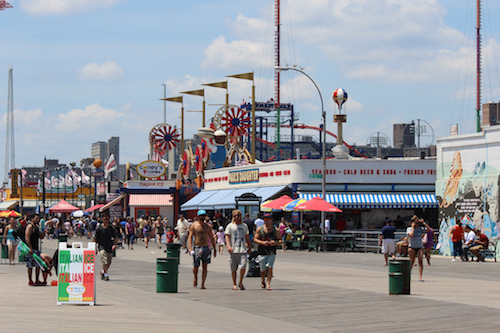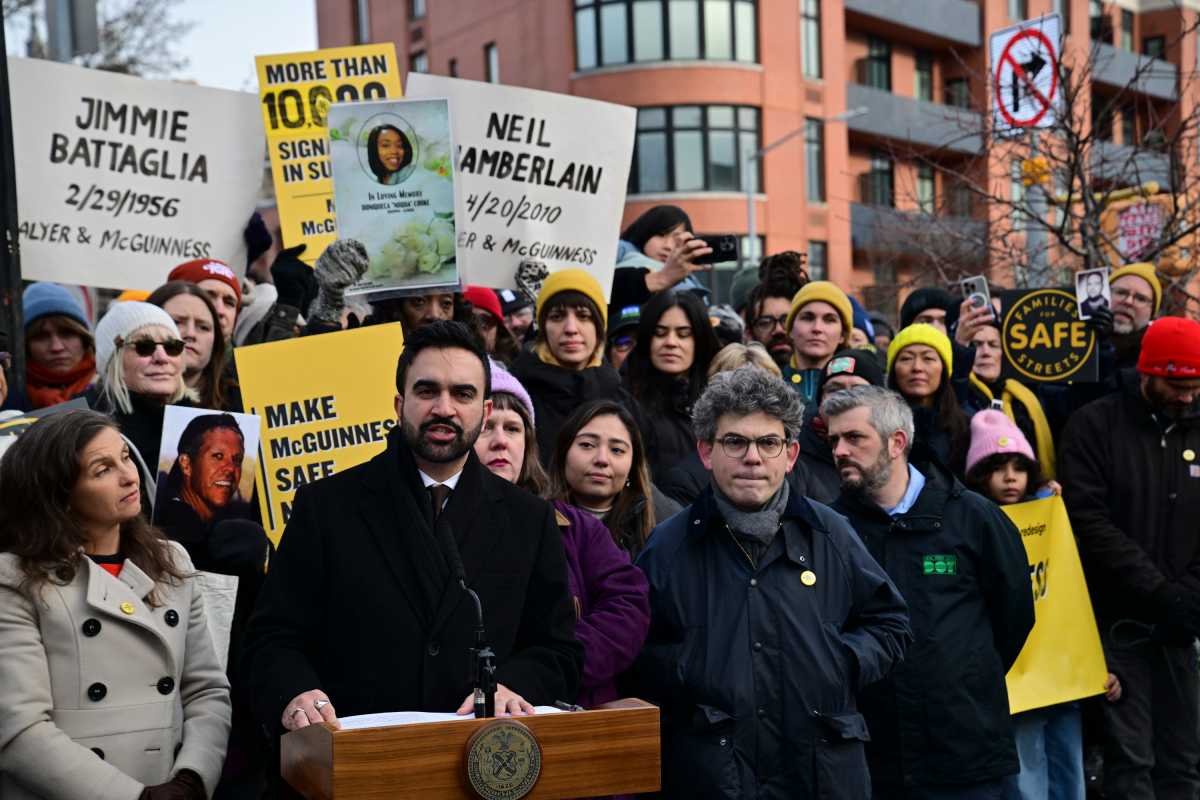The iconic Coney Island Boardwalk is officially going down in history books starting today.
That after the city’s Landmarks Preservation Commission (LPC) designated the Coney Island (Riegelmann) Boardwalk as a scenic landmark in recognition of its cultural and historical significance.
Since opening on May 15, 1923, the Coney Island Boardwalk has been one of the best-known waterfront promenades in the world, providing access to the beach, amusements, and spectacular ocean views. Scenic landmark designation will protect the boardwalk’s presence along the beachfront and preserve this iconic site for future generations.
“The Coney Island Boardwalk is as much a part of the culture as it is a part of the history of New York City. It is a beloved public space that embodies Coney Island’s democratic spirit and reflects our City’s values of tolerance, inclusivity and equity,” said Landmarks Preservation Commission Chair Meenakshi Srinivasan.
Named for Brooklyn Borough President Edward J. Riegelmann, who played a leading role in its creation, the Coney Island Boardwalk was part of an ambitious municipal plan to rejuvenate Coney Island and provide the opportunity for people of all economic and social backgrounds to freely enjoy the seaside and beach activities for the first time in New York City. It attracted New Yorkers and visitors alike, from all over the world.

The new designation was applauded by many elected officials including South Brooklyn city Council members Mark Treyger (D-Coney Island, Bensonhurst, Gravesend),Chaim Deutsch (D-Sheepshead Bay, Midwood, Manhattan Beach, Brighton Beach) including Borough President Eric L. Adams.“Since 1923, our Boardwalk has been a destination for millions of visitors from New York City and beyond. For generations, Southern Brooklynites have grown up with the Boardwalk as their backyard, and it plays a significant role in summer activities for the Coney Island and Brighton Beach communities,” said Deutsch

“The Coney Island Riegelmann embodies the American democratic spirit and continues to be an iconic symbol of our city and our country, but it’s also a vital part of our local community to this very day. I am incredibly proud and excited that the NYC Landmarks Preservation Commission has recognized the need to preserve and protect this beloved structure, as well as an integral piece of southern Brooklyn’s rich culture, history and tradition” said Treyger.
Designed by engineer Philip P. Farley, who also planned the public beach, and built in three phases between 1922 and 1941, the boardwalk extends 2.7 miles, from West 37th Street in Coney Island to Brighton 15th Street in Brighton Beach. The first section of the boardwalk, between Ocean Parkway and West 37th Street, formally opened on May 15, 1923.
Two years later, the boardwalk was extended 4,000-feet east, to Coney Island Avenue, and under Park Commissioner Robert Moses, an additional 1,500-feet to Brighton 15th Street in 1941.
The Coney Island Boardwalk, an attraction, in and of itself, also enhanced existing amusements in the area such as The Wonder Wheel, landmarked in 1989, which illuminated the boardwalk and became a beacon in the skyline and a destination for Coney Island visitors. The Cyclone roller coaster, landmarked in 1988, was constructed not long after the boardwalk opened. Later, in 1941, The Parachute Jump from the New York World’s Fair (1939-40), landmarked in 1989, was brought to Steeplechase Park, adjacent to the boardwalk at West 16th Street. The attraction rises 250 feet in the air and to this day remains one of Coney Island’s most recognizable landmarks.

The boardwalk is also historically associated with New York City’s popular culture. Artists and filmmakers have been drawn to Coney Island and the boardwalk to capture the throngs of visitors and also the city and nation’s changing social customs and population. It has been featured prominently in the visual arts since opening, and movies, television and music videos have used the boardwalk as a visual backdrop or part of the narrative throughout its history.
Additionally, the American summer staple—the hot dog, is said to have been invented in Coney Island, and remains an important part of the boardwalk’s culture. The annual July 4th hot dog eating contest attracts competitors from all over the world.
“The same wooden walkway that inspired artists as diverse as F. Scott Fitzgerald and Beyoncé still inspires millions of people who enjoy its unique character. By designating the Riegelmann Boardwalk as a scenic landmark, the Landmarks Preservation Commission is protecting for future generations an institution that defines Brooklyn as a destination unlike anywhere else in the world, honoring the legacy of former Borough President Edward J. Riegelmann,” said Adams.










